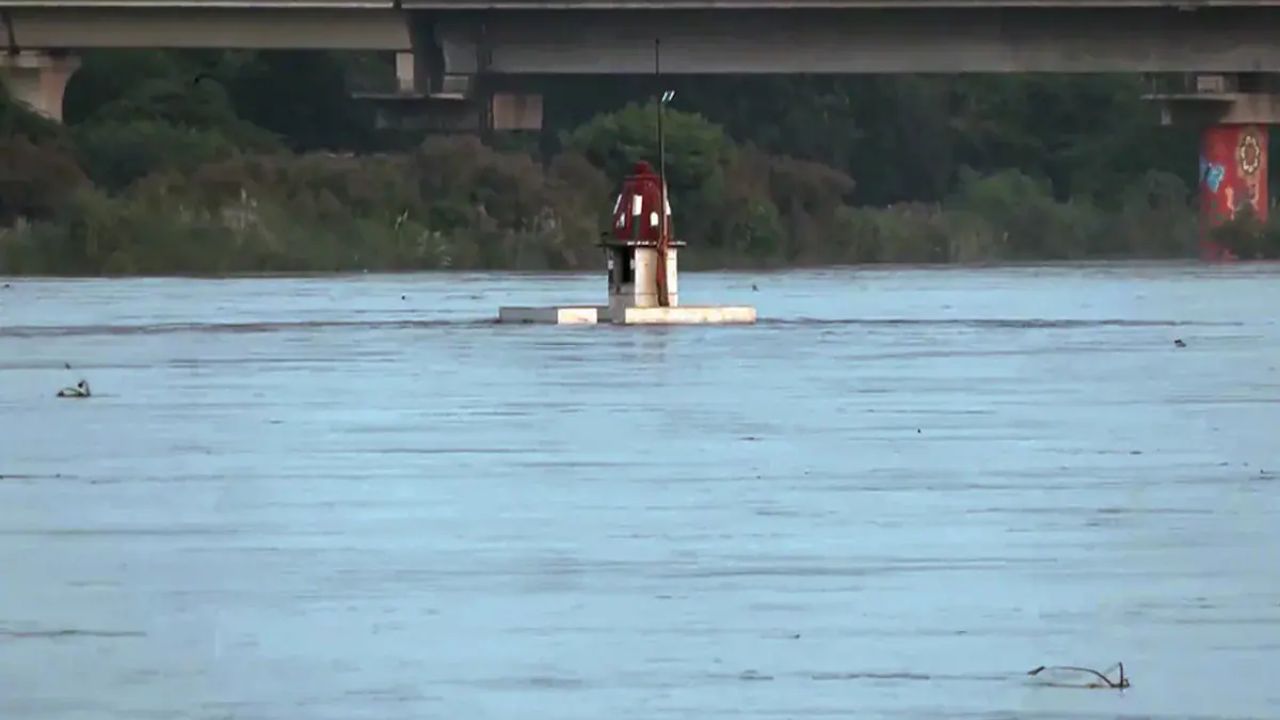 English
English

Despite receding Yamuna water levels, parts of Delhi remain flood-affected. Over 16,000 people in relief camps face health risks, poor facilities, water crisis, and disrupted traffic movement.

Yamuna Floods Disrupt Life in Delhi
New Delhi: Flood-like conditions prevail in Delhi due to the increased water level of the Yamuna River. Although the water level is gradually decreasing now, many areas are still facing the brunt of floods. The government and administration are constantly monitoring the situation, and relief and rescue operations are going on. Let us understand in detail what the flood situation in Delhi is at this time and what kind of impact it is having on the people.
On Friday, September 5, the water level of the Yamuna started decreasing gradually. The water level was recorded at 207.05 meters by 8 pm, which had reached 207.48 meters a day earlier. This was the highest level of this season. The Central Water Commission (CWC) estimates that the water level may decrease to 206.4 meters by the morning of September 6.
Chief Minister Rekha Gupta has monitored the situation and reviewed the relief work with all the District Magistrates (DMs) and concerned officials.
PWD Minister Pravesh Verma visited some flood-affected areas like Nigam Bodh Ghat and Monastery Market. He said that waterlogging in some areas is due to rain and not due to Yamuna floods.
Thousands of people are forced to leave their homes and live in relief camps due to floods. 7200 people have been affected in East Delhi, and 7 relief camps have been set up. 13 camps have been set up for 5200 people in Northeast Delhi.
4200 people have been affected in Southeast Delhi, and 8 camps have been set up. However, people living in the camps have complained about food, water, and sleeping arrangements.
Heavy Rains Lash Delhi-NCR: Waterlogging, traffic chaos, rising Yamuna trigger flood alerts
Former Chief Minister Arvind Kejriwal visited a relief camp in Shastri Park, where people said that they have to sleep under the open sky. The government claims that food is being provided 3–4 times a day and clean water and toilet facilities are being provided in the camps.
The risk of diseases has increased in the relief camps. People are troubled by problems like fever, fungal infection, and skin allergy. Its effect is being seen more on children and the elderly. Many people have to be taken to the hospital.

Yamuna waters rises unabatedly (Image Source: Internet)
Due to the flood, the water of Yamuna has become dirty and muddy, due to which the production capacity of the Wazirabad Water Purification Plant has decreased by 20%. This plant usually purifies 138 MGD of water, but now the water supply is being disrupted in many areas.
Due to sewage stagnation near Nigam Bodh Ghat, there has been heavy waterlogging on the Outer Ring Road. There was a traffic jam from Chandgi Ram Akhara to Hanuman Temple. The police have put up traffic diversions at many places so that traffic can be controlled.
The district administration has appealed to the people that no one should enter the Yamuna for bathing, boating, or strolling. Doing so can be fatal, and the risk of accidents can increase.
The impact of the Yamuna floods in Delhi is still visible in many areas. Relief and rescue operations are going on, but the situation in the camps is still not completely satisfactory.